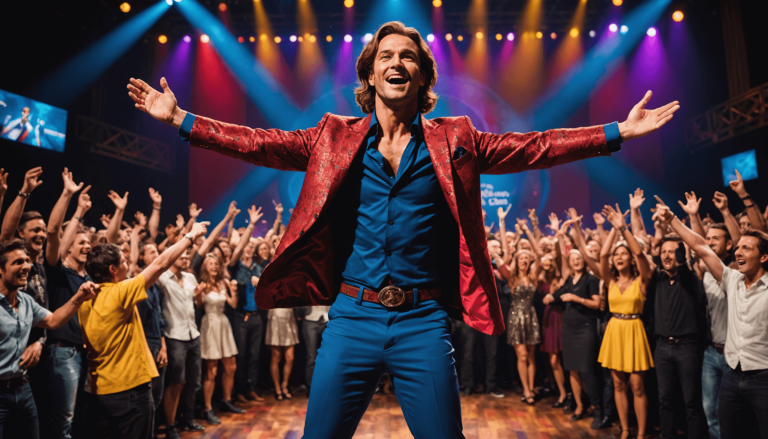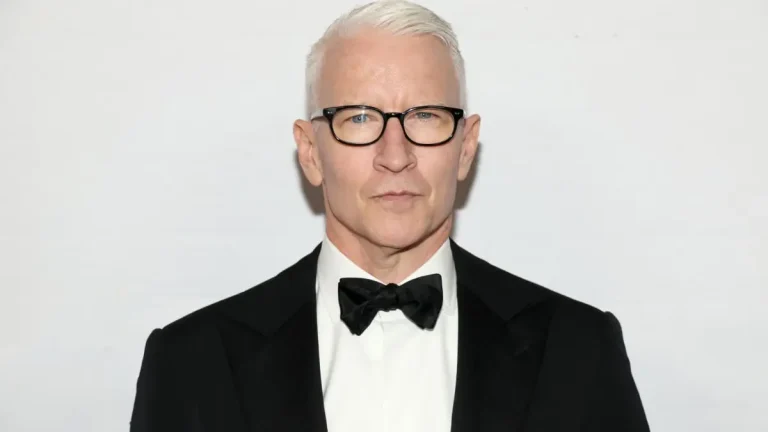Ever sit across from a plate of perfect pasta and wonder, who’s behind the brand that got that dish to your table? For people who follow restaurant empires, Vittorio Assaf is a name that hits hard. From Milan beginnings to dominating the hospitality game in cities like New York, Tokyo, and São Paulo — Assaf …
From Dreams to Dollars How Vittorio Assaf Built His Fortune

Ever sit across from a plate of perfect pasta and wonder, who’s behind the brand that got that dish to your table? For people who follow restaurant empires, Vittorio Assaf is a name that hits hard. From Milan beginnings to dominating the hospitality game in cities like New York, Tokyo, and São Paulo — Assaf didn’t just open restaurants, he built a movement.
The point of this read? Simple. We’re pulling back the curtain on who this guy really is, how he nailed the global food scene, and how Vittorio Assaf’s net worth keeps turning heads in finance, celebrity, and entrepreneurship circles. This isn’t just fluff about fame. It’s about how consistent execution, quality control, and smart expansion actually build fortunes.
So if you’re looking to see what real-world entrepreneurship looks like, and how a man builds a multi-million-dollar empire off a near-death experience on a sailboat — you’re in the right place.
Who Is Vittorio Assaf? A Biographical Overview
Let’s rewind.
Before the Serafina empire controlled corners of Manhattan, there was Milan. That’s where it all started for Vittorio Assaf — born November 29, 1958. Grew up with an eye on the world and a mind trained in Political Science and Law at the University of Urbino. He wasn’t born into the restaurant world. He studied the system, then built his own.
In 1985, Assaf took a leap. He moved from Italy to New York City — not to follow trends but to set them. At a time when the dining scene in NYC had its gatekeepers, he opened Café Condotti on the corner of 58th and Madison. The food turned heads, sure, but the place was also decked out with original Andy Warhol paintings, turning it into a statement. It was fashion, culture, and food—all on one plate.
But his big moment came by accident — literally.
During a rough sailing trip with future business partner Fabio Granato, the two found themselves stranded and starving. They made a pact: if they made it back alive, they’d open a pizza place serving the kind of food they’d been craving. That bond turned into Serafina in 1995. Not hyped by press releases or marketing campaigns—but by purpose, flavor, and passion born from survival.
That first Serafina was more than just another Italian joint in NYC. It was an energy. Lively atmosphere, genuine flavors, and a vibe that attracted a crowd. From there, they weren’t just riding a wave. They became the wave.
Vittorio Assaf’s Business Ventures
The name Serafina doesn’t whisper — it speaks in volume across continents. What started as one location grew beyond the wildest post-sailing-trip pact. Serafina is now a global name, with over 30 restaurant locations in hotspots like Dubai, Tokyo, and São Paulo. What made it stick?
It came down to the details:
- every dish made with ingredients sourced directly from Italy.
- bright colors, loud energy, and no-frills service that makes high-end dining feel casual.
- each location feels local but delivers the same punch.
They weren’t just opening restaurants. They were exporting Italian living—and that was addictive.
But Assaf didn’t get comfortable. Aside from Serafina, he expanded strategically across cuisines. He helped launch Geisha, a Japanese fusion spot, giving a nod to diversity without swerving too far from his roots. And then came Brasserie Cognac—French classics delivered with the same crowd-pleasing bravado.
Here’s where it gets interesting.
On paper, this looks like textbook diversification. But Assaf didn’t just chase culinary trends; he curated them. Every venue had its own story, style, and follower base. Different food, same DNA: design-forward, experience-focused, and always pushing quality.
And yes—celebrity culture played a role.
Serafina became the unofficial clubhouse for celebs, from models to actors to musicians. And that wasn’t an accident. In the hospitality game, visibility is velocity. Celebrities didn’t just dine there—they brought the spotlight with them. The strategy worked—the brand exploded globally, and Assaf’s reputation as a hospitality heavyweight followed.
He designed more than just menus. He designed moments, printed them in memory, and scaled them worldwide.
| Venture | Type | Market Reach |
|---|---|---|
| Serafina | Italian Cuisine | 30+ cities globally |
| Geisha | Japanese Fusion | New York |
| Brasserie Cognac | French Bistro | Limited US Locations |
It’s not just about food or fame. It’s about stacking smart plays—taking risks on your gut, then backing them up with systems. Vittorio Assaf didn’t get here by luck. He got here by showing up, knowing his value, and building offerings that speak across cultures.
For someone chasing the blueprint behind multi-million-dollar empires, the journey of Vittorio Assaf offers a masterclass in calculated growth and staying power.
Breaking Down Vittorio Assaf’s Wealth
If you’ve ever wondered just how much someone can earn from pizza, pasta, and premium ambiance, Vittorio Assaf’s net worth gives you a pretty compelling answer. One look at the wildly popular Serafina brand, and it’s evident there’s more to this restaurateur than a love for Italian cuisine. But how much is he really worth? Well, it depends on who you ask.
Net Worth Analysis
Estimates for Vittorio Assaf’s net worth paint a surprisingly wide picture. Some sources put the figure around $25 million, while others stretch it much higher—up to $250 million. Then there’s the more middle-ground estimate that pegs it somewhere between $40 million and $50 million.
Why such a wide range? Part of it comes down to how value is assessed. Some calculations include projected future earnings based on Serafina’s global footprint. Others focus strictly on accessible assets and confirmed ventures. Timing plays a role too. Publicized estimates done during the launch of a new restaurant may inflate figures based on buzz rather than reality.
The truth is, private business owners like Assaf don’t always have fully transparent portfolios. Unless he were to list Serafina Group publicly or make detailed disclosures, there’s room for speculation. But even the lowest estimate recognizes a successful and wealthy entrepreneur by any standard.
Revenue Streams and Asset Portfolio
While Serafina remains his main income engine, Assaf hasn’t put all his eggs—or truffle pasta—in one basket. Revenue pours in from over 30 Serafina locations around the globe, from New York to São Paulo.
Beyond that flagship brand, Assaf has dipped toes into other restaurant ventures. Restaurants like Geisha, a Japanese fusion hotspot, and Brasserie Cognac, a French option, speak to his knack for diversification. By offering different cuisines, he also spreads risk—hedging against changing food trends or regional economic shifts.
There’s also the likelihood of real estate hovering in the background. Restaurateurs of his caliber often invest directly in their outlets’ properties or surround themselves with attractive, appreciating commercial real estate. While hard data on these holdings is scarce, industry insiders suggest property value could be a silent heavyweight in Assaf’s wealth.
Factors Behind Assaf’s Financial Growth
A few core moves explain Assaf’s upward financial swing:
- Consistency in quality: His well-known habit of sourcing ingredients personally from Italy enhances brand trust and keeps customers coming back.
- Global market footprint: Serafina’s presence in cities like Dubai and Tokyo taps into high-spending international clientele.
- Risk spreading: Launching ventures outside traditional Italian menus allows him to ride out changes in cuisine trends or localized downturns.
Add in a bit of celebrity sheen—thanks to high-profile diners—and you’ve got a recipe for not just a brand, but a money-making machine.
Vittorio Assaf’s Career Milestones: From Visionary to Global Entrepreneur
It’s not every day that a promise made at sea turns into an international dining empire. But that’s exactly what happened with Vittorio Assaf. From his early beginnings in Milan to the crowded culinary scene of Manhattan, his story combines hustle, heart, and a pinch of serendipity.
The Role of Vision in Shaping a Successful Career
Long before opening Serafina, Assaf first tested the waters in NYC back in 1985 with Café Condotti. It wasn’t just the espresso or pasta that drew crowds—it was the vibe. Original Andy Warhol paintings adorned the walls, turning a small eatery into a cultural gem.
But the real turning point? A life-threatening sailing trip. Stranded with partner Fabio Granato, they made a pact—if they made it through, they’d build the best pizzeria around. The moment they hit land, Serafina took shape.
What began as a single NYC location soon spiraled into an empire, one slice at a time. The growth didn’t just happen. It was calculated, fueled by a bold vision and relentless follow-through.
Challenges and Resilience Over the Years
Running restaurants may sound glamorous, but it’s rarely smooth sailing. The Serafina brand has weathered its fair share of storms—labor shortages, inflation, and global supply disruptions, just to name a few.
But Assaf has stayed adaptable. When staffing became an issue, he reworked training and operations. When ingredient costs soared, he leaned even harder into direct partnerships with Italian suppliers, maintaining quality without sacrificing margins. He’s bounced back from setbacks by learning fast and adjusting faster.
Creating a Legacy
Today, Serafina isn’t just a name—it’s a global invite to modern Italian culture. From celebs checking in via Instagram to new franchises popping up internationally, Assaf’s brand has become a lifestyle marker.
More than just business, his model has inspired a generation of restaurateurs. It’s proof that you can go from café to global chain without losing your soul—or signature flavor.
Behind the Scenes: Vittorio Assaf’s Business Strategies
Anyone can make a plate of pasta. Very few can turn it into a multi-location food empire. So what’s the secret sauce behind Assaf’s success? It’s not just about recipes—it’s about strategy, timing, instinct, and a global playbook that responds to taste, not trend.
Keys to the Growth of Serafina
Vittorio Assaf didn’t just open restaurants—he created entire environments. His insistence on fresh ingredients handpicked from Italian farms does more than elevate the taste—it sells authenticity in a crowded market.
And when Serafina expanded internationally, it wasn’t copy-paste. Restaurants in Tokyo or Dubai reflect local aesthetics and preferences while staying true to Italian roots. That cultural respect, blended with brand consistency, helps new locations succeed where competitors fizzle.
Marketing Tactics in a Competitive Industry
One powerful part of Serafina’s brand? Its celeb magnetism. Whether it’s a Hollywood A-lister on a New York patio or a supermodel sipping wine in Monaco, that type of exposure acts as unpaid PR that money just can’t buy.
You’ll also find Serafina dominating review platforms with thousands of user-generated shoutouts. That mix of influencer marketing, organic buzz, and location timing—like launching in growing travel hubs—keeps the momentum fresh and relevant.
Diversification Beyond Hospitality
While food is the core, Assaf isn’t boxed in by it. His ventures reveal a mind that enjoys variety—Japanese-style fine dining, upscale French brasseries, and even bar-lounge hybrids.
It’s also likely he’s invested beyond the plate. Restaurateurs of his caliber often back tech platforms or consumer brands tied to lifestyle and hospitality. Though not confirmed publicly, insiders believe Assaf explores angel investments and property acquisitions when opportunities align with his aesthetic—refined, international, and always a bit unexpected.
Vittorio Assaf’s Investment and Financial Strategies
Most people in the restaurant game think in quarters. Vittorio Assaf? He plays the long game. His financial strategy isn’t about quick flips or rapid exits—it’s about building something that lasts. For Assaf, every dollar earned from Serafina isn’t just profit to stash away; it’s fuel for the next move.
His reinvestment mentality is real. Profits from each successful Serafina spot often go right back into the business—launching in a new city, trying out new culinary concepts, or exploring cross-cultural menus like he did with Geisha and Brasserie Cognac. That’s how he scaled from a pizza promise made on a sailboat to over 30 global locations. It’s sustainable growth—real roots instead of rented hype.
Now let’s talk volatility. The pandemic crushed a lot of restaurants—but Serafina held its ground. That wasn’t luck. Assaf’s strategy factors in chaos. He’s weathered recessions, rising food costs, and labor shortages by staying focused on agility. That’s the playbook: stay flexible, stay in tune with local markets, and never stop adapting.
Outside the restaurant industry, Assaf is quiet, but he’s not idle. Real estate? Likely. Private investments? Very possible. While exact numbers are under wraps, diversified income streams are a smart hedge. Would you really bet everything on tourism and dining post-2020? Assaf didn’t. And that helps explain why “Vittorio Assaf net worth” searches have started trending again.
Analysis of Vittorio Assaf’s Fortune and Financial Journey
Here’s the deal—restaurant moguls don’t always get the same spotlight as tech CEOs or celebrity brands, but the money can be just as serious. Vittorio Assaf isn’t a household name like Gordon Ramsay or Nobu Matsuhisa, but in the culinary capital circles, he’s built serious leverage. The estimates on Assaf’s net worth are all over—from $25 million to $250 million—but let’s not get caught up in what can’t be verified to the dot. What matters is that his empire’s impact is global, and his financial footprint is baked into that.
Compare that with other restaurateurs: Joe Bastianich went big with his Eataly concept; Guy Fieri cashed in on brand deals. Assaf? He stuck close to quality-first service and a clear cultural identity. That kind of focus builds more than trends—it creates staying power. While others might have scored with TV or personality-heavy tactics, Assaf monetized consistent service, authentic ingredients, and experience design. His restaurants became destinations—even for celebrities, which only added gas to the growth engine.
There’s a lot aspiring entrepreneurs can learn just by watching how Vittorio moves:
- Stick to your product : Authentic Italian food wasn’t just branding—it was backbone. He knew guests could tell the difference.
- Reinvest relentlessly : He built new spots, explored other cuisines, and entered global markets with eyes wide open.
- Adapt to survive : Recessions, changing diner behavior, and even pandemics didn’t catch him sleeping. He adjusted, not retreated.
- Partnership matters : His partnership with Fabio Granato wasn’t just foundational—it was the jet fuel. Division of tasks, shared vision, and mutual trust made the business durable.
The big takeaway here? You don’t need to chase unicorns or invent some new app to build wealth. Assaf showed that steady, strategic scaling—especially when grounded in something real like food—can build a lasting fortune.
Celebrity Entrepreneurship Insights: What Sets Assaf Apart
Most people don’t start a restaurant empire while clinging to life on a busted sailboat. But that’s how Serafina began—born from a promise between two friends floating in a storm. Vittorio Assaf combined creative drive with operational skill. That blend? It’s rare.
Crafting pizza is one thing; turning it into a brand recognized in Tokyo, São Paulo, and Dubai takes something else entirely. Assaf didn’t just open restaurants, he built an empire that runs on experience—sight, taste, vibe. And he did it without turning the soul of his concept into a corporate checklist.
He didn’t just lean on chefs. He learned operations. Menu development. Customer behavior. Hospitality systems. It’s all part of his blueprint. Add in the synergy with Fabio Granato, and you’ve got a duo where creativity met sharp business instincts. That type of partnership is what fuels longevity when most restaurants flame out.
Now mix in his Italian heritage—and you’ve got the foundation of his voice. It’s not just food, it’s flavor, scenery, emotion. From the tile work to the imported tomatoes—everything has roots. That authenticity isn’t romanticism; it’s a business weapon. Because in an industry where experiences are everything, origin stories matter.
Closing Reflections on Vittorio Assaf’s Wealth and Story
From Milan to Manhattan, and then far beyond, Vittorio Assaf turned a near-death moment into decades of success. His journey wasn’t built on flash—it was built on flavor, focus, and ridiculous consistency. Yes, his net worth may fluctuate across estimates, but his value in the world of global hospitality? Absolutely undeniable.
Whether you’re planning on opening a food truck or dreaming of becoming the next household name in hospitality, Assaf’s path drops all kinds of lessons. Play long-term. Reinvent without losing your roots. And never underestimate what one well-done dish can do—especially when paired with the right mindset.






